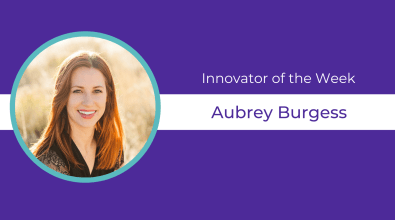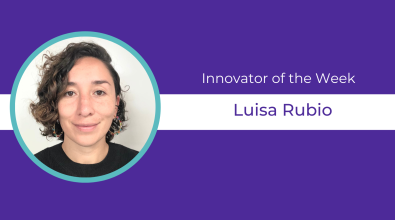What innovation coaches learned by training 35 city hall teams

For the past six months, 35 U.S. cities have engaged in a first-of-its-kind experiment in how to take an already great idea, test it with residents, and make it even better.
These 35 are the Champion Cities in this year’s Bloomberg Philanthropies Mayors Challenge. In February, each received $100,000 to work on an idea they had proposed to some of cities’ most pressing concerns, from clean energy to juvenile justice to transportation. After spending several months testing prototypes of their ideas with residents, and then revising their plans based on the feedback, they submitted their final Mayors Challenge applications late last month. Winners of up to $5 million will be announced in October.
This human-centered design process is pretty new to the public sector. That’s why each city team worked with a coach — each of them a design expert with a deep background in private- and public-sector innovation.
Bloomberg Cities talked with these coaches back in March and caught up with them again as cities wrapped up the “test and learn” phase of the Mayors Challenge. Here’s what they had to say about how thinking in the cities they worked with evolved over that time.
What’s the one thing that surprised you the most as you worked with cities over the past few months?
James Canfield, founder and principal, MAG7 Collective: I was surprised by just how eager residents were to participate in the co-creation process. I believe the cities earned a tremendous amount of goodwill from residents who were able to participate. The cities will be able to use this goodwill to buy the time needed to make any course corrections once they have implemented their idea.
Laura Hyde Page, project lead, Jump Associates: I have been surprised at how deeply the teams I worked with feel the responsibility of the trust placed in them by residents. And I have a new understanding for why it can be difficult for them to step outside their comfort zone when it comes to running low-fidelity tests with residents. I have also witnessed my teams really push themselves beyond their comfort zone throughout the testing phase, and had the pleasure of sharing in their excitement when testing is received positively by the communities the work in.
Ruben Ocampo, founder, Conic Group: It is incredibly refreshing to see folks unafraid to share their ideas with as many people as possible. Many times in the corporate world, people can be very secretive about their ideas, fearing that if they share them, someone else might act on their idea before they can. This is often counterproductive, and causes ideas to die.
However, the cities I worked with were far less concerned with owning an idea, and far more focused on impact and objectives. If someone else knew about their idea, it wasn’t seen as a risk — it was seen as an asset. They shared their ideas broadly and got a lot of engagement, excitement, and support. In that way I think cities, and the public sector in general, are far ahead of the private sector.
Is there an example where you think prototyping most paid off, in terms of helping a city advance its idea?
Leah Filler, innovation consultant, Fahrenheit 212: Austin, Texas, was operating under the assumption that MyPass, their blockchain records system for the homeless, could be configured using a specific platform that is already programmed for refugees. They learned through testing that these use cases were not as comparable as they thought — this wouldn’t be a turnkey solution for them. However, prototyping helped them to refine the exact flows, features and functionality they do need.
Ruben Ocampo: The team in Miami Beach, Fla., presented an interesting example. Their initial hypothesis relied heavily on different sources of predictive analytics to give residents, commuters, business owners and visitors hyper-local advanced notice of upcoming weather-related incidents. However, the first round of testing showed that users were less interested in predictions of what may happen tomorrow or the day after, and far more interested in knowing what is happening real-time during an incident. This insight helped the team switch their focus from technologies for predictive analytics to engaging users so they could crowdsource the data in real-time.
Laura Hyde Page: When Georgetown, Texas, got started, they weren’t sure how much they would have to pay residents to participate in their solar power initiative. By prototyping their idea with residents early, they discovered residents were in fact willing to pay the city to participate, if they were guaranteed back-up power in an emergency. Following this exciting revelation, the team quickly advanced their idea to include back-up power as a service.
[Read: Unleashing the power of public prototyping]
James Canfield: Part of the idea in Boulder, Colo., involves using incentives to overcome the barriers that prevent low-income residents from using alternatives to single-occupancy vehicles. One test included $25,000 worth of incentives, but residents only took advantage of a total of $50 of the incentive pool. This was a big “a-ha” moment for the city — they realized that incentives by themselves will not work.
In response, the city developed a resident engagement model. It starts with using respected members of the community, which they’re calling “community connectors,” to introduce alternative modes to the larger community.
What’s one piece of advice you would offer to cities that are trying to push themselves to innovate?
Ryan Baum, principal, Jump Associates: Test small. You don’t have to build out the entire pilot solution in order to learn. Identify the biggest critical uncertainties and then test them in a small-scale way.
Amanda Noonan, strategy director, frog design: Don’t try to be perfect. Become comfortable with agility and quick testing of ideas with residents — the more we test, the more we learn. It’s about keeping the forward momentum, and remaining open and vigilant for those precious gems, the unknown unknowns that can help us meet real needs in ways that will really work.
[Read: Meet the new force shaking up city halls: designers]
Erik Olesund, co-founder, Collective Capital: Ask yourselves upfront what you are hoping to have created a year from now. Then ask, who will own this? Build this? Maintain this? Get those partnerships and capabilities in place early.
James Canfield: Make sure you have a clear understanding of the problem you are trying to solve. Before testing the underlying assumptions behind your proposed solution, first test the underlying assumptions you are making about the problem.
Laura Hyde Page: Get comfortable doing quick, low-fidelity tests with residents early in the evolution of an idea. While it is tempting to shield people from the mess of the kitchen until an idea is fully baked, residents actually prefer it when they are engaged early and often. This not only ensures that your idea meets real needs, but also smooths the way for implementation.


